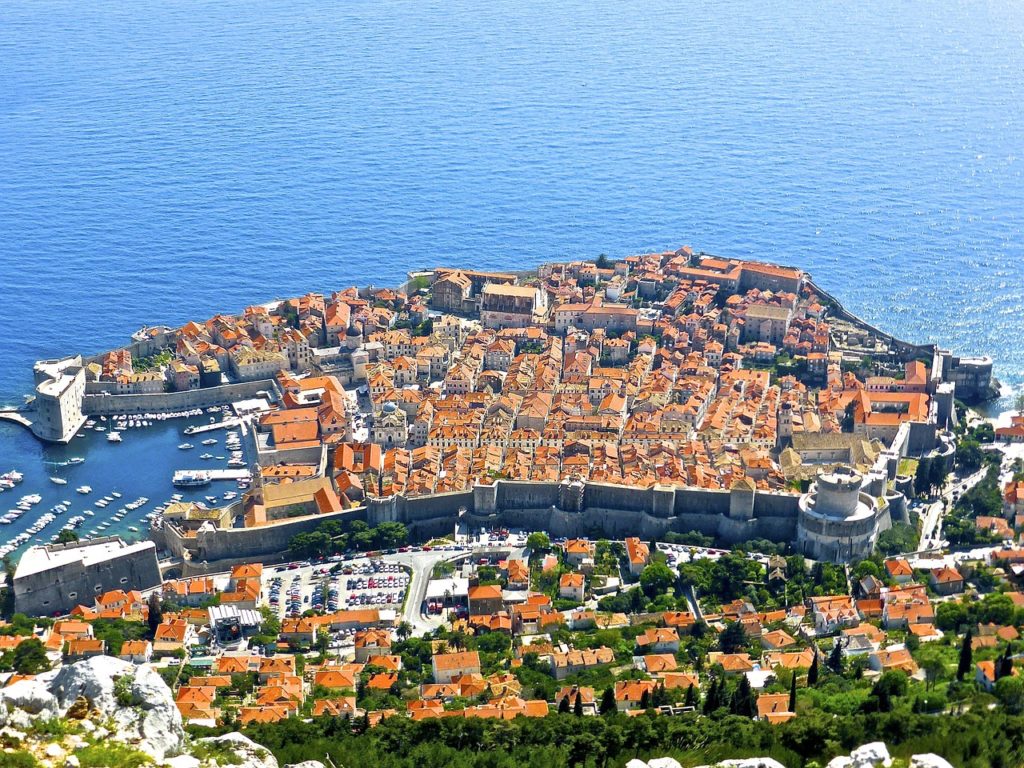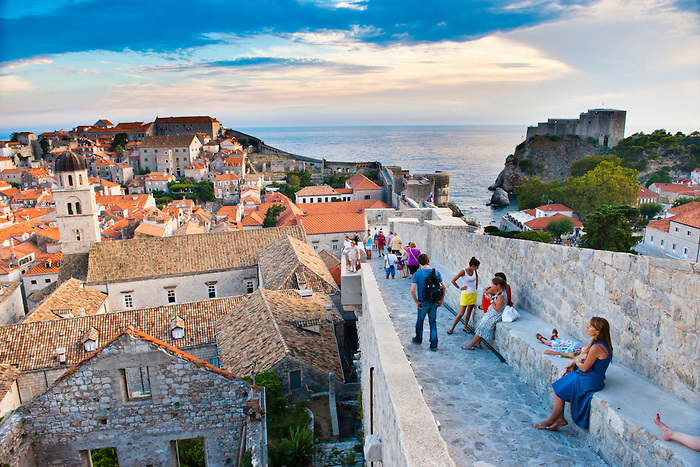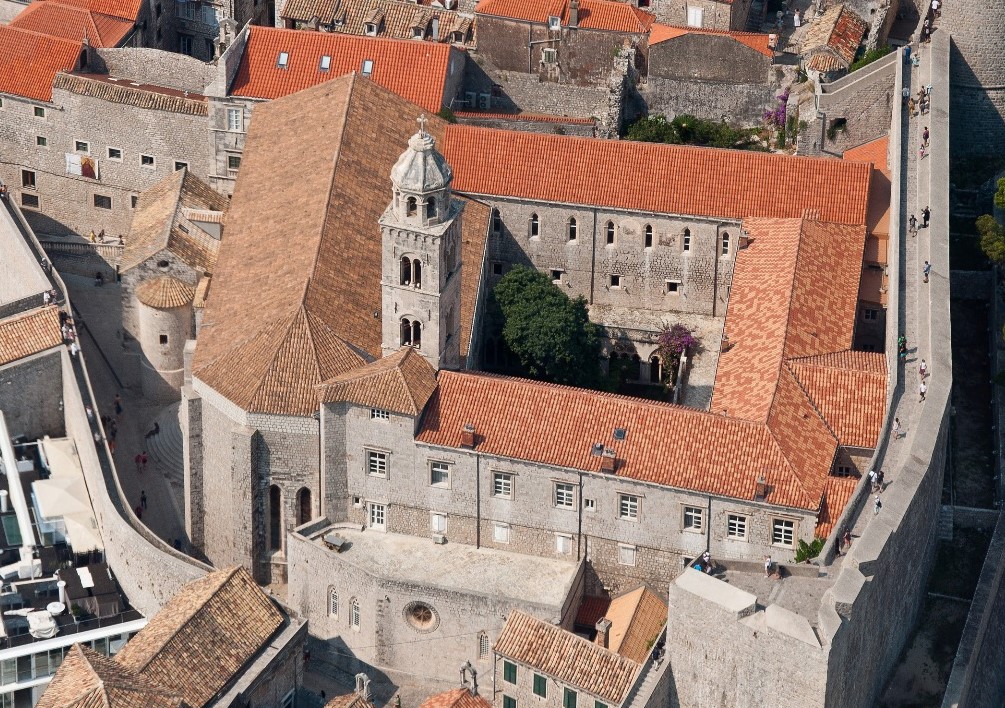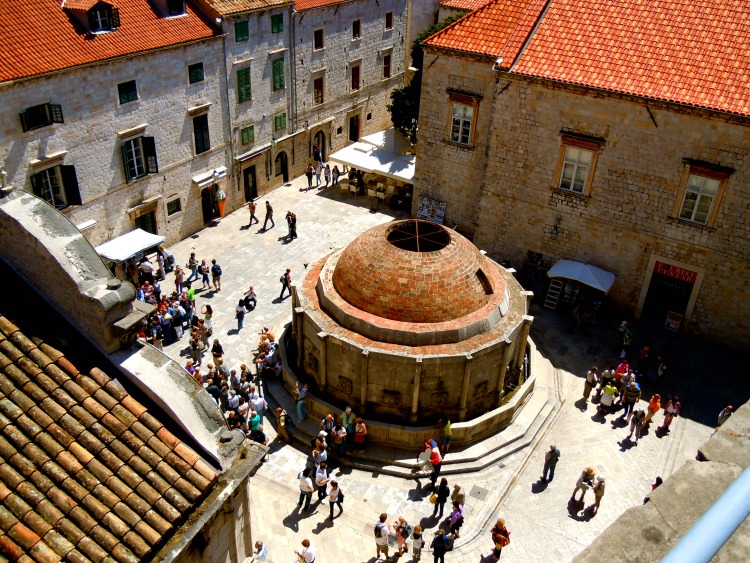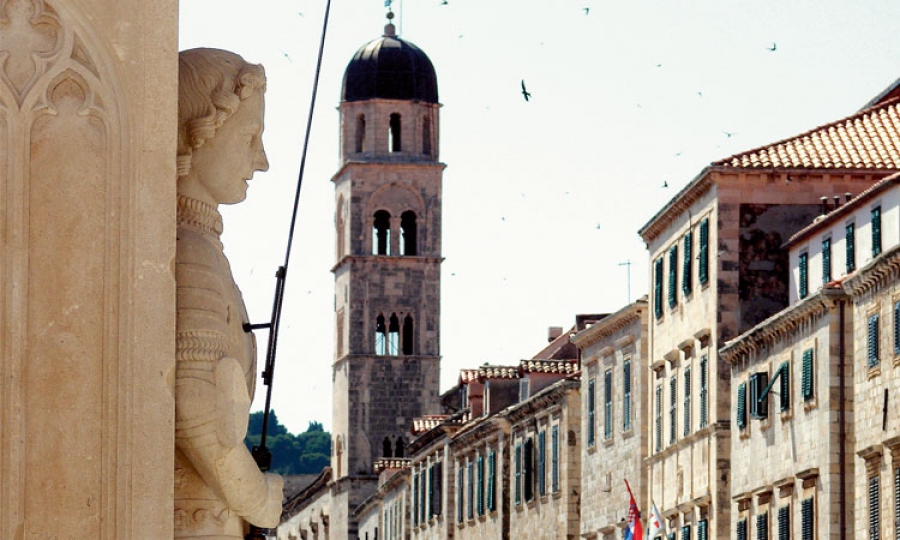Hello fellow adventurers! We meet again.
We continue our journey through Croatia and its heritage, after beautiful Split, and the road is taking us south ( don’t check your maps for the route of locations we visit, it’s gonna be messy ) to Dubrovnik the pearl of the Adriatic.
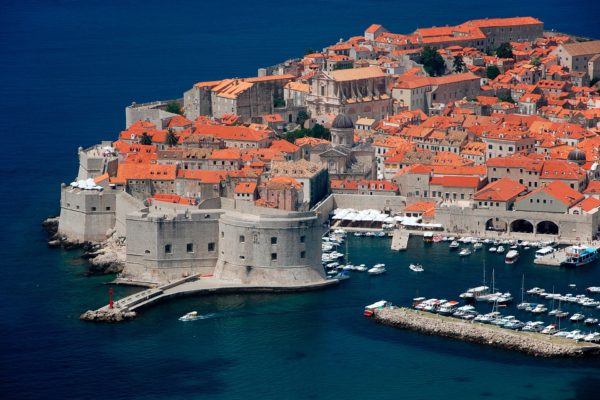
Dubrovnik old town was placed on UNESCO’s list of world heritage sights in 1979 due to great preservance and historical importance. The Croatian name of the town is derived from the word dubrava (oak wood), while the Latin name Ragusa – Rausa originated from the name of the island where the first settlement was established (Lave, Lausa- the rock). The names Dubrovnik and Ragusa co-existed for several centuries. Ragusa, recorded in various forms since at least the 10th century, remained the official name of the Republic of Ragusa until 1808, and of the city within the Kingdom of Dalmatia until 1918, while Dubrovnik, first recorded in the late 12th century, was in widespread use by the late 16th or early 17th century. Dubrovnik was probably founded in the first half of the 7th century, upon the fall of the nearby Epidaurum (today’s Cavtat) during the Avaro-Slavic invasion of Dalmatia. From its establishment, the town was under the protection of the Byzantine Empire, during the Crusades it came under the sovereignty of Venice (1205-1358), and by the Peace Treaty of Zadar in 1358 it became part of the Hungarian-Croatian Kingdom. Having been granted the entire self-government (bound to pay only a tribute to the king and providing assistance with its fleet), from that moment Dubrovnik started its life as a free state. Between the 14th century and 1808, Dubrovnik ruled itself, although it was a vassal from 1382 to 1804 of the Ottoman Empire and paid an annual tribute to its sultan. The Republic reached its peak in the 15th and 16th centuries when its thalassocracy rivaled that of the Republic of Venice and other Italian maritime republics. In the course of several centuries, Dubrovnik grew into the most powerful economic center on the eastern coast of the Adriatic, developing a powerful fleet of merchant and warships and maintaining diplomatic relations with a number of countries and cities. The economic wealth of the Republic was partially the result of the land it developed, but especially of seafaring trade. With the help of skilled diplomacy, Dubrovnik merchants traveled lands freely and on the sea, the city had a huge fleet of merchant ships (Argosy) that traveled all over the world. From these travels, they founded some settlements, from India to America, and brought parts of their culture and flora home with them. One of its keys to success was not conquering, but trading and sailing under a white flag with the word Latin: Libertas (freedom) prominently featured on it. The flag was adopted when slave trading was abolished in 1418.
Dubrovnik had its Statute as early as 1272, which, among others, codified the town-planning and hygienic regulations. Medical service was introduced in 1301; the first pharmacy opened in 1317, the old people’s home in 1347; the first quarantine hospital (“lazaret”) was organized in 1377; the Supreme Medical Council was established in 1424; in 1432 the orphanage was opened; the waterworks was constructed in 1436.
A crisis of Mediterranean shipping and especially a catastrophic earthquake in 1667 put Dubrovnik in a very difficult economic position. In such a situation Dubrovnik saw the beginning of the Napoleonic wars. The French entered Dubrovnik in 1806; in 1808 Marshal Marmont abolished the Dubrovnik. Pursuant to the resolutions of the Vienna Congress in 1815, Dubrovnik was annexed to Austria. Although severely damaged by an earthquake in 1667, Dubrovnik managed to preserve its beautiful Gothic, Renaissance, and Baroque churches, monasteries, palaces, and fountains. Damaged again in the 1990s by armed conflict, it is now the focus of a major restoration programme co-ordinated by UNESCO.
Today the great walls are the major attraction in Dubrovnik (1.1 million visitors in 2016), with a total length of 2 km, a height of 25 m along with the fortresses and towers. Ramparts and towers outside the walls were built in the period from the 12th to the second half of the 17th century. The main wall is 6400 feet long, 13.2-19.8 feet wide on the mainland side and 5-16.5 feet wide on the seaside, and up to 82.5 feet high. It was reinforced by three circular and 14 quadrangular towers, five bastions, two angular fortifications and a large fortress called Sveti Ivan (St. John). Among the towers, the most monumental is the circular tower of Minceta, on the northwestern corner of the ramparts. The reinforcement, along with the main wall on the mainland side, includes 1 larger and 9 smaller semicircular bastions, and the casemate fortress Bokar, the oldest preserved fortress of that kind in Europe. The ramparts around the town have been preserved in their original shape. Entrances to the city walls are situated at both ends of Stradun, near the Pile Gate and next to Dominican Monastery.
Besides walls, Dubrovnik has several main attractions to see and visit. First one is Dominican Monastery. The Dominican Church was erected in 1315 but it was destroyed in the earthquake of 1667, to be rebuilt after that again. It is a mixture of Gothic and Renaissance styles. The plain interior consists of a huge single nave with a triple Gothic arch end opening into the sanctuary and two side chapels, the only part of the original building left. The graceful late-Gothic Cloister has a garden is planted with orange trees. The Bell Tower, begun in 1390 and completed in 1531, in a curiously retarded Romanesque style, continued by the later baroque lantern. The Dominican Library was founded in the 13th century. Its collection expands over 16,000 volumes, 240 incunabula and important archives. It was one of the biggest European libraries in the period between the 15th and 17th century. Inside the monastery, there is a museum with artifacts from Dubrovnik’s goldsmiths, reliquaries, and other sacral objects. Its painting collection contains many works of the old masters from the 14th to 20th century.
Another one is The Great Onofrio Fountain. One of Dubrovniks most famous landmarks, this large fountain was built in 1438 as part of a water-supply system that involved bringing water from a spring 12km away. Originally the fountain was adorned with sculptures, but it was heavily damaged in the 1667 earthquake and only 16 carved masks remain, with drinkable water dribbling from their mouths into a drainage pool. Built from 1438 to 1440, the Big Onofrio’s Fountain is a sixteen-sided container with a cupola and was one of the ending points of the aqueduct system. Each of the sixteen sides has a unique “maskeron” design (stone-carved masked face) with the faucet projecting out of the mouth of each design. The fountain’s cupola was made by Petar Martinov from Milan.
Church of St. Blaise – one of the most beautiful sacral buildings in Dubrovnik, the present-day Church of St Blaise was constructed in 1715 in the flamboyant Venetian Baroque style. It was constructed by the Venetian master Marino Gropelli in 1706, on the commission of the Dubrovnik Senate which requested a new church on the site of the old 14th-century Romanesque church. Damaged during the earthquake for the first time, the church was destroyed completely by the devastating fire in 1706. Everything disappeared in flames, apart from the silver statue of St Blaise, which was saved by some miracle. After the years spent in exile at the Church of St Nicholas at Prijeko, the statue was returned to its old place in 1715. The people of Dubrovnik added the following inscription on the statue all other statues made of gold, silver, and bronze melted in the fire, while the saint’s statue was miraculously undamaged. The statue is one of the most important statues in Dubrovnik, and the model of the city which the saint holds in his hand reveals the city architecture at the time.
And last but not the least, Orlando’s Column, an ancient knight and a symbol of the city’s freedom. The column, erected in 1418, features armored knight Orlando who according to the legend, helped the people of old Dubrovnik (Ragusa) defeat invaders in the middle ages and therefore helped Dubrovnik to remain a free trade city-state. Being a monument to freedom, nowadays the column also features Libertas (freedom) flag of towns Summer festival as well as St Blaise festival flag.
Dubrovnik is a stunningly intact walled city, a true Pearl of the Adriatic that bears the nickname deservedly. Although its population barely exceeds 40,000, it’s one of the most prominent tourist resorts of the Mediterranean. It is a must stop on most Mediterranean cruises and personal travels, and it is clear why this is so. Rich history, unique culture, almost perfect preservance, eye-catching architecture and mild Mediterranean climate. What else would you need for a perfect setting? Oh, did we forgot to mention that Dubrovnik was featured in famous Game of Thrones, Star Wars, and new Robin Hood? So if you’re a fan, there’s a chance to visit all of the locations and get into roleplaying or simply a photo memory to remind you of your adventure in this historical town.
A thousand-year-old history of Dubrovnik is visible in every part of this city. The city is a living museum and a live stage and has an ideal connection between its historical past and the modern day. Dubrovnik is a city that charms, a city that you fall in love with and always return to discover more unique experiences. A witness to centuries of great history, wars, famous people, kings and queens Dubrovnik outlived it all and stands proudly on the foundation set long ago Libertas.
Combine activity to reach Dubrovnik with AndAdventure self-guided cycling .
Boys and girls, stay tuned until our next article and destination. We’re only half-way there!
Keep safe and stay active!


